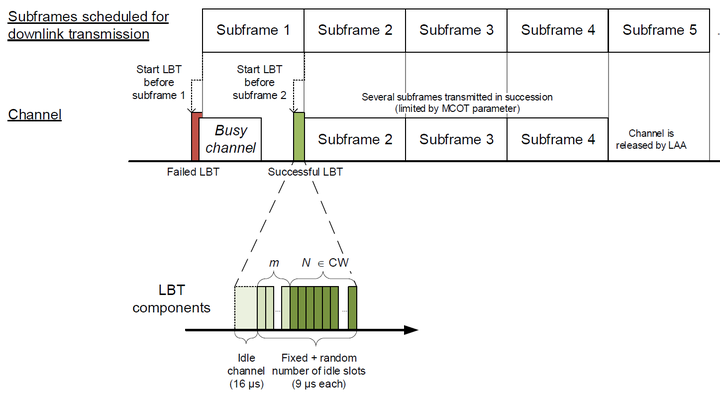Revisiting LTE LAA: Channel Access, QoS, and Coexistence with WiFi
 Channel access in LAA
Channel access in LAA
Abstract
Network operators are looking toward LTE License Assisted Access (LAA) as a means of extending capacity by offloading traffic to unlicensed bands. However, operation in these bands requires abiding by certain coexistence rules in terms of channel access. The description of these rules in the existing literature is not always in line with the latest standards. Therefore, in this article, we clarify the operation of LAA, focusing on channel access and methods of providing quality of service (QoS) support. In terms of coexistence, we evaluate the impact of LAA under its various QoS settings on WiFi performance in an experimental testbed. Finally, we describe the upcoming research challenges for LTE-based technologies in unlicensed bands considering the latest developments.